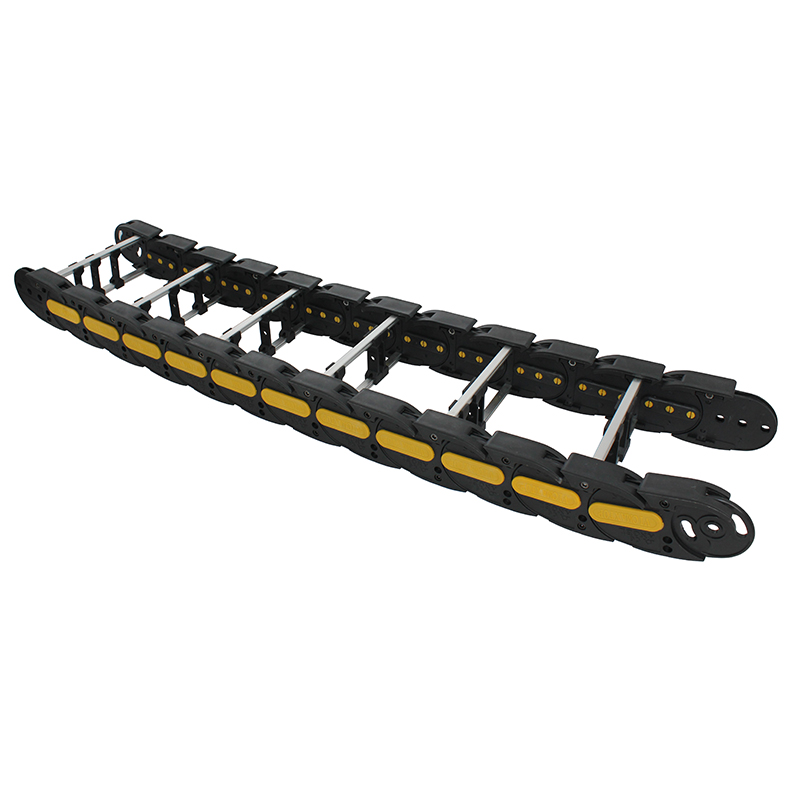drag chain compatible
Understanding Drag Chain Compatibility The Key to Efficient Cable Management
In the world of modern machinery and automation, the efficient management of cables and hoses is paramount. As industrial technology continues to evolve, the complexity of mechanical assemblies increases, leading to the heightened need for effective cable management solutions. Among these solutions, drag chains stand out as a vital component. But what does it mean for a drag chain to be “compatible,” and why is this compatibility critical for your operations?
What is a Drag Chain?
A drag chain, also known as a cable carrier, is a specially designed conveyor system used to manage and guide cables, wires, and hoses in motion. These chains allow for the organized movement of these components alongside moving machinery, such as robotic arms or CNC machines. The primary purpose of a drag chain is to prevent entanglement, tangling, or wear and tear that could result from unrestricted movement.
The Importance of Drag Chain Compatibility
Drag chain compatibility refers to the ability of the drag chain to properly accommodate various types of cables and hoses without compromising their function or integrity. Compatibility is determined by several factors, including the drag chain’s dimensions, the materials used in its construction, and the specific application requirements.
1. Dimensions and Configurations Different machines require different sizes and shapes of drag chains. When choosing a drag chain, it is crucial to ensure that the chain’s internal width and height can accommodate the specific width and diameter of the cables and hoses it will carry. Additionally, the flexibility and bend radius of the chain are essential considerations, as they impact how the drag chain moves and how tight corners can be navigated.
2. Material Compatibility Drag chains are made from a variety of materials, including plastic, aluminum, and steel, each offering distinct advantages and disadvantages in terms of weight, durability, and resistance to environmental factors. The compatibility of these materials with the cables and hoses must be assessed; some cables are susceptible to wear from harsh materials or high temperatures, while others might require specific protective features.
drag chain compatible

3. Movement and Flexibility The type of motion involved—whether linear, rotary, or complex—is another critical fit for drag chain compatibility. For machines that undergo rapid or extensive movements, a poorly matched drag chain can lead to cable strain and, ultimately, failure. Thus, ensuring the chain can flex adequately to accommodate movement without stressing the cables is essential.
4. Application-Specific Requirements Different industries impose unique requirements on cable carriers. For example, applications in the food processing industry may require wash-down compatibility, while automotive applications may demand robust resistance to chemicals and oils. Compatibility based on industry-specific requirements is crucial for maintaining performance and compliance with safety standards.
Benefits of Proper Compatibility
Ensuring drag chain compatibility offers several benefits. It enhances the longevity of cables and hoses by preventing wear and tear due to friction or improper support. Moreover, it promotes higher efficiency in machine operations, reducing downtime caused by cable damage or mismanagement. A properly compatible drag chain can also simplify maintenance, making it easier to replace cables and perform inspections.
Final Thoughts
In conclusion, understanding drag chain compatibility is essential for any facility that relies on complex machinery and automation. This compatibility affects not only the longevity and performance of cables and hoses but also the efficiency and safety of entire operations. Whether you are in manufacturing, robotics, or any other field where cable management is crucial, investing time in selecting the right drag chain can yield significant returns in terms of operational efficiency and equipment reliability.
As technology advances and the demand for more sophisticated machinery grows, keeping abreast of drag chain compatibility is not just an option; it's a necessity for sustaining competitiveness in today’s market.








